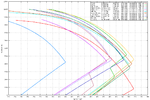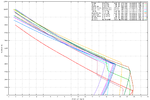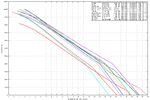Hi Vincenzo,
>HoHun can explain me why italian fighter climb speed are so different from italian test?
No idea. At which flying weights were the figures you quoted achieved?
I know that over on Aces High forum, Italian forum member Gatt and Aces High's Hitech discussed climb rate figures for some Italian fighter (of a later generation, I believe) that were too high to be realistic. Gatt had contact to a retired Macchi engineer (I believe - maybe it was an other company), and I seem to remember that after much research, lower figures were accepted as probable.
Maybe this was not type-specific, but systematic for Italian ratings and procedures?
Regards,
Henning (HoHuN)
>HoHun can explain me why italian fighter climb speed are so different from italian test?
No idea. At which flying weights were the figures you quoted achieved?
I know that over on Aces High forum, Italian forum member Gatt and Aces High's Hitech discussed climb rate figures for some Italian fighter (of a later generation, I believe) that were too high to be realistic. Gatt had contact to a retired Macchi engineer (I believe - maybe it was an other company), and I seem to remember that after much research, lower figures were accepted as probable.
Maybe this was not type-specific, but systematic for Italian ratings and procedures?
Regards,
Henning (HoHuN)



